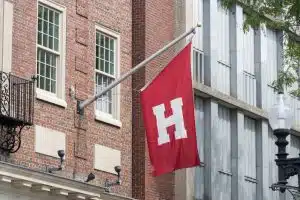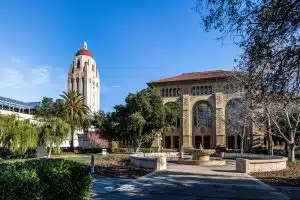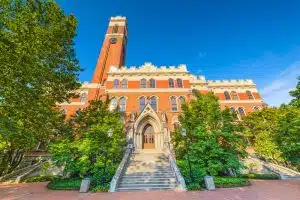Understanding the Size of the Cornell Freshman Class
The size of the incoming freshman class at Cornell University has always been a point of curiosity and discussion amongst students, alumni, and higher education enthusiasts alike. This comprehensive understanding of Cornell University’s freshman class size spans across many decades and factors, reflecting societal and institutional changes that have shaped this Ivy League institution.
The Historical Perspective of Cornell’s Freshman Class Size
Early Years of Cornell University
When Cornell University opened its doors in 1865, the freshman class was rather small. Not only was it a newly established institution, but higher education in general was not as commonly pursued in those times. However, despite its small size, Cornell’s freshman class was filled with eager and ambitious students who were excited to be part of this groundbreaking educational venture.
As the years went by, Cornell University began to make a name for itself in the world of academia. Its innovative curriculum, dedicated faculty, and commitment to providing a well-rounded education attracted more and more students to its campus. Within the first few decades, the enrollment grew steadily as Cornell’s reputation solidified and the demand for higher education increased.
The university’s reach extended beyond New York and soon attracted students from around the world. This influx of international students brought with them diverse perspectives and experiences, enriching the academic and cultural fabric of Cornell. This gentle swell in diversity and numbers marked the beginning of the growth trends that have defined the size of the Cornell freshman class over the years.
Growth Trends Over the Decades
From the early to late 20th century, Cornell continuously expanded its student population. The stability and prosperity of the post-war years contributed to a boom in the student body. As the nation recovered from the ravages of war, young individuals sought higher education as a means to secure a brighter future. Cornell, with its reputation for excellence, became a beacon of hope for many aspiring students.
During this period, Cornell witnessed a surge in enrollment across various fields of study. The liberal arts, sciences, engineering, and agriculture all experienced significant growth. The university’s commitment to providing a comprehensive education that catered to a wide range of interests and career aspirations attracted students from diverse backgrounds.
As the world entered the 21st century, the landscape of higher education underwent a transformation. The rapid advancement of technology and the increasing interconnectedness of the global community opened up new opportunities and challenges. Cornell, with its cutting-edge research and innovative programs, became a magnet for students interested in fields such as computer science and engineering.
Interestingly, despite these growth trends, Cornell’s freshman class size has remained consistent over recent years. This is a deliberate choice by the university, which places a strong emphasis on maintaining an optimal student-to-faculty ratio and providing an intimate academic environment for its students. By carefully managing the size of the freshman class, Cornell ensures that each student receives personalized attention and has access to the resources and support necessary for their success.
Looking ahead, Cornell University continues to evolve and adapt to the changing needs of students and society. As the world becomes increasingly interconnected and complex, Cornell remains committed to providing a transformative educational experience that prepares its students to become leaders and innovators in their respective fields.
Factors Influencing the Size of the Freshman Class
Though the typical Cornell Freshman Class Size is around 17 students, when it comes to determining the size of the freshman class at Cornell University, there are several factors at play. These factors range from admission policies and standards to the university’s capacity and resources, as well as the demand for different courses.
Admission Policies and Standards
Cornell University is known for its stringent admission standards and comprehensive policies. The university’s holistic admission process takes into account various aspects of an applicant’s profile, including academic prowess, extracurricular achievements, and personal qualities. By considering these factors, Cornell ensures that only eligible students who meet their high standards are accepted. This careful selection process naturally limits the size of the freshman class, as only a certain number of students can meet the university’s rigorous criteria.
Furthermore, Cornell’s commitment to diversity and inclusivity is also reflected in its admission policies. The university strives to create a vibrant and diverse community, which means that the freshman class is composed of students from various backgrounds, cultures, and experiences. This commitment to diversity adds another layer of complexity to the admission process and contributes to the overall size of the freshman class.
University’s Capacity and Resources
In addition to admission policies, the size of the freshman class is also influenced by the university’s capacity and resources. As a prestigious institution located in Ithaca, New York, Cornell University has limited physical space and resources. It is essential for the university to maintain a comfortable, well-resourced campus environment to ensure a top-quality educational experience for its students.
The availability of accommodations, facilities, and resources plays a crucial role in determining the size of the freshman class. Cornell must carefully consider its capacity to accommodate and support incoming students, taking into account factors such as housing availability, classroom space, laboratory facilities, and faculty resources. By carefully managing these resources, Cornell can ensure that each student receives the necessary support and attention required for their academic and personal growth.
Demand for Different Courses
The size of the freshman class at Cornell University also reflects the evolving demands and interests of prospective students. As the world changes and new fields of study gain prominence, the university must adapt to meet these demands. For example, in recent years, there has been a significant increase in the number of students aiming for degrees in fields like Computer Science and Engineering.
Cornell University has recognized this growing demand and has worked to expand its offerings in these areas. By providing more resources, faculty, and opportunities in these fields, Cornell attracts a larger number of students interested in pursuing these disciplines. This, in turn, contributes to the increasing diversity and size of the freshman class.
In conclusion, the size of the freshman class at Cornell University is influenced by a combination of factors. From the university’s rigorous admission policies and standards to its capacity and resources, as well as the changing demands for different courses, each element plays a crucial role in shaping the composition of the incoming class. By carefully considering these factors, Cornell University strives to create a vibrant, diverse, and academically exceptional community for its students.
Comparing Cornell’s Freshman Class Size with Other Ivy League Schools
Comparison Criteria
When comparing Cornell University’s freshman class size to that of other Ivy League institutions, several factors come into play. These include overall institutional size, variety of offered courses, location, and unique academic culture.
Cornell University, located in Ithaca, New York, is the largest Ivy League school by enrollment, with an undergraduate population of over 15,000 students. This large student body allows for a diverse and vibrant community, offering a wide range of perspectives and experiences. With its expansive campus and extensive resources, Cornell is able to provide a multitude of academic and extracurricular opportunities to its students.
One of the key factors that sets Cornell apart from its Ivy League counterparts is its commitment to offering a vast array of courses across various disciplines. From the humanities to the sciences, engineering to agriculture, Cornell’s curriculum is designed to cater to the diverse interests and career goals of its students. This breadth of offerings ensures that students have the opportunity to explore different fields of study and find their passion.
Furthermore, Cornell’s location in upstate New York provides a unique setting for learning and personal growth. Surrounded by natural beauty, students have access to outdoor recreational activities such as hiking, skiing, and boating. The university’s commitment to sustainability and environmental stewardship is reflected in its numerous research initiatives and programs focused on addressing global challenges.
Analysis of the Data
Historically, despite these factors, Cornell tends to have a larger freshman class than some of its Ivy League peers. This can be attributed to the university’s reputation for academic excellence, its diverse range of programs, and its commitment to providing a supportive and inclusive learning environment.
While some may argue that a larger freshman class size could potentially lead to a diluted academic experience, Cornell has managed to maintain its high standards of education. The university’s faculty-to-student ratio ensures that students still receive individualized attention and have access to mentorship opportunities. Additionally, Cornell’s emphasis on undergraduate research and experiential learning allows students to engage deeply with their chosen fields of study, fostering intellectual growth and critical thinking skills.
Moreover, Cornell’s commitment to student success extends beyond the classroom. The university provides a wide range of support services, including academic advising, career counseling, and wellness programs. These resources help students navigate their academic and personal journeys, ensuring that they have the necessary tools and support to thrive during their time at Cornell.
In conclusion, while Cornell University tends to have a larger freshman class size compared to some of its Ivy League peers, this has not compromised the quality of education or the unique academic environment that the university offers. With its diverse student body, extensive course offerings, picturesque location, and commitment to student success, Cornell continues to attract and nurture talented individuals who are eager to make a positive impact on the world.
Impact of Freshman Class Size on University Life
When it comes to the size of the freshman class, it is not just a matter of numbers. The impact of class size on university life goes beyond mere statistics. Let’s delve deeper into the academic and social implications of having a larger freshman class.
Academic Implications
The size of the freshman class can certainly impact the university’s academic environment. A larger class size, coupled with a diverse course offering, allows students to explore different disciplines and expand their intellectual horizons. With a greater number of students, there is a wider range of perspectives and ideas to be shared. This fosters an environment for intellectual interactions and communal learning.
Imagine walking into a lecture hall filled with eager minds, all ready to engage in lively discussions and debates. The energy in the room is palpable as students from various backgrounds come together to exchange ideas, challenge each other’s assumptions, and collaborate on projects. This dynamic academic atmosphere not only enhances the learning experience but also encourages students to think critically and explore new avenues of knowledge.
Social and Cultural Effects
While the academic implications of a larger freshman class are significant, the social and cultural effects should not be overlooked. Culturally, a larger freshman class creates a vibrant, socially engaging landscape where students from varied backgrounds bring unique perspectives, thereby enriching the university culture and promoting inclusivity.
Imagine a campus buzzing with activity, where students from different parts of the world come together to form a diverse community. The interactions between students of different cultures, languages, and traditions create a melting pot of ideas and experiences. This not only broadens students’ understanding of the world but also fosters a sense of empathy and appreciation for diversity.
Moreover, a larger freshman class provides ample opportunities for students to connect and form lasting friendships. With more people to meet and interact with, students can build a strong support network that extends beyond the classroom. Whether it’s joining clubs, participating in extracurricular activities, or simply engaging in casual conversations, the social aspect of university life is greatly enhanced by a larger freshman class.
In conclusion, the impact of freshman class size on university life is multi-faceted. From the academic benefits of intellectual interactions and communal learning to the social and cultural advantages of a vibrant and inclusive campus, a larger freshman class brings with it a wealth of opportunities for personal and academic growth. So, whether the freshman class is big or small, it is the interactions and experiences within that class that truly shape the university experience.
Future Predictions for Cornell’s Freshman Class Size
Impact of Current Trends
Based on current trends in higher education and societal shifts, it’s reasonable to expect that the size of the freshman class at Cornell University will continue to be dynamic, reflecting changes in the higher education landscape and student demographics.
University’s Strategic Plans
Finally, as part of Cornell’s strategic plan for the future, it reassures the optimisation of its freshman class size, seeking a perfect balance between academic excellence and student diversity. This is to ensure Cornell remains a leader in education while also providing an environment conducive to personal and professional growth for its students.









































